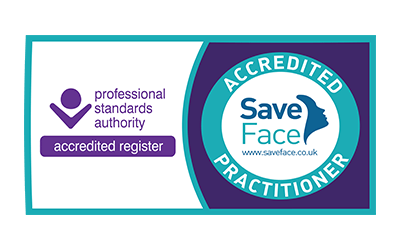Sagging skin is unavoidable as we get older, however much we commit to looking after ourselves both inside and out.
The skin on the face can sag in different ways. Fine lines and wrinkles emerge, bags form under the eyes, and folds deepen between the nose and mouth and down to the jaw, jowls and loss of definition develop on the jawline and under the chin.
It is a common complaint we see in Karidis Clinic, and we have a range of surgical and non-surgical treatments for lifting and tightening the skin.
Why does our skin start to sag?
One of the key causes of skin sagging is the loss of collagen and elastin, two naturally occurring proteins found in the dermis, in a process known as intrinsic ageing. The former is responsible for the strength and suppleness of our skin, and the latter the elasticity or its ability to retract when stretched.
The amount of collagen and elastin in the skin tends to increase until our mid-20s and, thereafter, the dermis layer produces 1% less collagen every year.
However, sagging skin is not just due to loss of collagen and elastin. As we age, we also see reabsorption of the underlying bony structure and shrinking of the natural fat pads, which give the overlying skin its support and structure.
Genetics can play a significant role in that some people are naturally predisposed to have poorer skin elasticity. However, several external factors can accelerate the natural loss of collagen and elastin in a process known as extrinsic ageing, including a bad diet, stress, poor sleeping patterns, lack of exercise, sun damage, smoking and excessive alcohol consumption.
How to tighten facial skin
Prevention is always better than cure, so the first step is eliminating any damaging lifestyle factors accelerating skin sagging. However, if you’ve already started to notice less-than-welcome changes in the firmness of your facial features, here’s our guide to tightening and lifting your skin.
Firming creams and lotions
Most leading skincare companies sell creams, lotions and serums, promising to lift, tighten or firm the skin. Most of them contain collagen and elastin, the components that are essential for plump and youthful skin. But do they work?
Unfortunately, most of these firming creams are a waste of money because the collagen and elastin molecules present in these products are too large to penetrate the skin’s surface and cannot help rebuild or reinforce the dermis.
However, some skincare ingredients can help to firm up the skin. Look for cosmeceuticals that contain high levels of these active ingredients. They include vitamin A or retinol, which, when applied topically, can improve the shape of the skin’s elastin and has even been proven in small-scale studies to help build elastin. Exfoliants containing salicylic acid (BHA) or glycolic acid (AHA) have also been proven to help rebuild collagen and improve skin texture.
Supplements
In recent years, the beauty world has become awash with collagen supplements boasting numerous health benefits, including the ability to treat loose skin. They claim they can deliver collagen peptides that can soften fine lines and wrinkles and boost skin elasticity.
However, the truth is that collagen supplements are not the best option to improve skin sagging, and there is no clinical evidence to back up the claims of these product companies.
Face yoga
Face yoga is a compelling option for those who want an all-natural approach to improving sagging skin. It involves specific massage exercises stimulating the muscles, skin and underlying lymphatic system. This technique claims to relax the facial muscles to help alleviate tension, and this could smooth the dynamic wrinkles that form due to repetitive facial expressions.
Practitioners of the art of face yoga also claim that it can improve the structure of your face by strengthening the muscles in the upper, mid and lower face, creating a more youthful and firmer appearance.
Non-surgical cosmetic procedures
For men and women who are just starting to see the first signs of facial ageing but still have good skin elasticity, we offer several non-surgical treatments to address skin sagging.
Temporary hyaluronic acid dermal fillers are often used to address volume loss, one of the critical causes of skin sagging. They can replace lost volume at the temples and in the cheek area to create a lifting effect and can also be placed at strategic points in the jawline to elevate the skin and improve definition.
Ultherapy is a non-surgical cosmetic procedure approved by the FDA for lifting skin on the neck, chin and brow and improving lines and wrinkles on the upper chest.
It delivers micro-focused ultrasound energy, or MFU, into the dermis to stimulate collagen production, and it can be focused on a specific skin layer, depending on where you are lacking in collagen.
Facial ageing, such as loss of definition along the jawline, sagging in the mid-face and drooping in the brow or eye area, can also be significantly improved with a thread lift. Threads made of polylactic acid are inserted into the dermis, producing an instant lifting effect and stimulating collagen remodelling to tighten the skin further and smooth out deep lines and wrinkles over the following weeks.
The ideal candidate for Ultherapy or a thread lift is someone with mild to moderate skin laxity and perhaps is not fully ready for a surgical skin tightening procedure such as a facelift.
Surgical cosmetic procedures
Although there have been considerable advances in the field of non-surgical aesthetics, the facelift is the gold standard for addressing significant skin sagging. It offers the most dramatic and long-lasting results.
A facelift, or rhytidectomy, eliminates excess skin and redrapes it to create a smoother appearance. It can also address the underlying structures of the face, known as the SMAS layer, to ensure the face looks lifted while remaining natural. As well as sagging skin, the deep plane facelift can address flattened cheeks, deep nasolabial folds, jowls, a double chin and a turkey neck.
To find out whether you are best suited to a non-surgical or surgical skin tightening procedure, call 0207 432 8727 to arrange a consultation. Your skin elasticity, as well as your desired outcome, will be assessed, and we can advise you on which approach will deliver the results you’re hoping for.
















